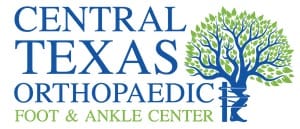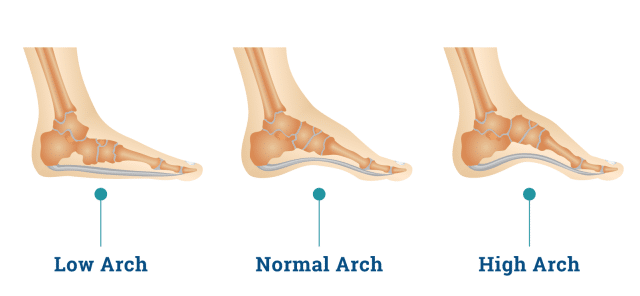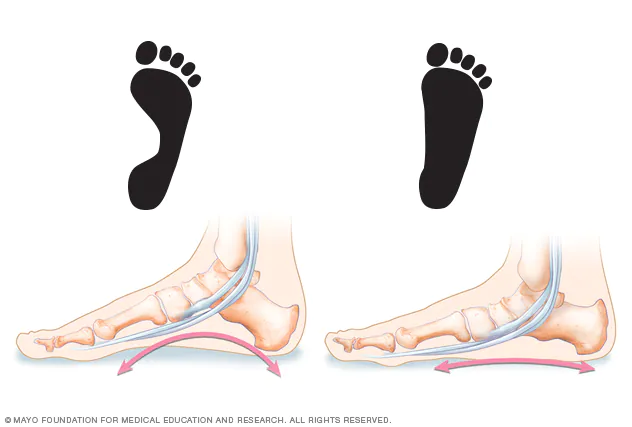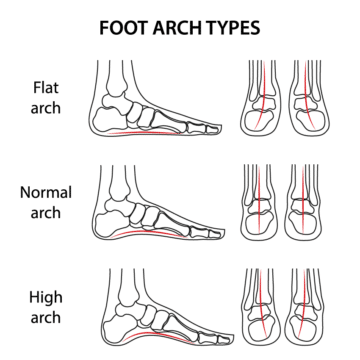Can Falling Arches Cause Ankle Pain?
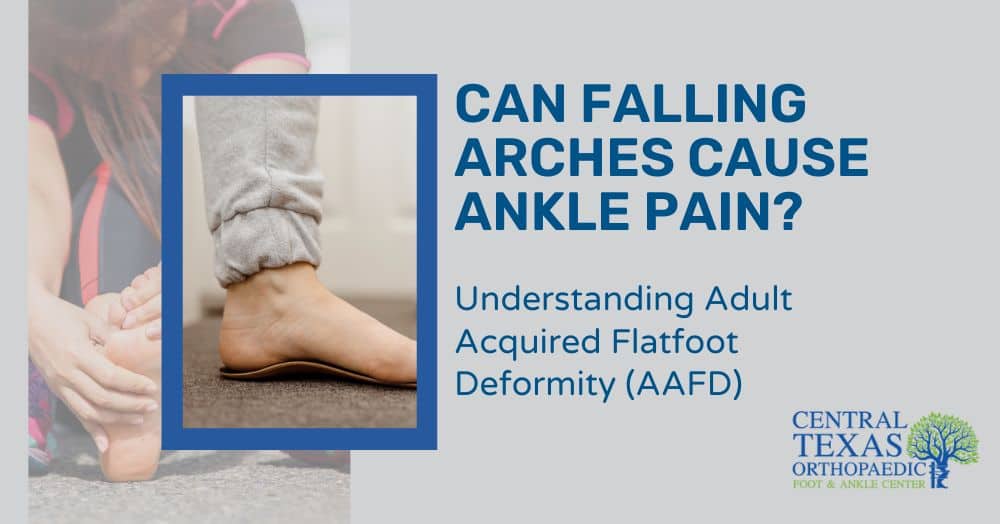
Whether walking, jumping, or just running errands, sustained use of the feet is simply unavoidable. The arch, the curve on the bottom of the foot, helps with weight distribution, shock absorption, and movement throughout the foot. A network of tendons that attach at the heel, foot bones, and lower leg create the arch. When the tendons move in sync, movement, and agility are painless and seamless.
Generally, your feet develop arches during childhood. Healthy, intact arches on the soles of your feet are essential but can flatten as you age and face other life changes. If you think the arch of your foot has changed over time, you could be right. When the tendons that create the arch don’t work efficiently, the arches can collapse or “fall.” This is often referred to as “falling arches” or simply – flat feet.
What Causes Flat Feet?
The term Flat feet refers to a condition where the arch on the inside of the foot flattens out when pressure is applied. This is often seen when the entire bottom of the foot, the sole, is flat when a person stands, causing the feet to point outward. This condition is usually painless, and as long as it remains painless, no treatment is necessary.
Flat Feet in Adulthood
Developing flat feet in adulthood, Adult Acquired Flatfoot Deformity (AAFD), can happen later in life. When adults develop flat feet, there is usually an underlying medical issue. Arches that developed typically in the foot can collapse or “fall” as we age. Aside from aging, some of the risk factors for developing the condition include injuries to the foot or ankle (trauma), arthritis, obesity, pregnancy, genetics, diabetes, or overuse.
Acquired Flat Feet and Ankle Pain
The pain caused by flat feet is not limited to the feet. Abnormal stress placed on the feet changes the way body weight is distributed in the foot. The pressure and tension created in other areas of the leg and foot are called on to compensate.
This can cause:
- Ankles to turn inward
- Painful ankle swelling
- Overuse of tendons near and around the ankle
- The heel to shift outward (ankle-heel misalignment)
- Arthritis
- Deformity of the ankle
AAFD can also contribute to stiffness in areas like the knee, lower back, legs, and hips. The onset of fallen arches can be subtle and progressive. If you experience pain in any of these areas, you should consult an orthopaedist.
Treatment Options for AAFD
During the early stages of this disorder, early intervention is beneficial and can relieve pain and reduce inflammation. Over-the-counter anti-inflammatory medications, stretching exercises, an immobilization boot, and orthotic supports can have positive effects on pain reduction and slow down the progression of the disorder without surgery.
Depending on the level of deformity, symptoms, and goals, surgery may be the most appropriate method of treatment. Surgical procedures can remove inflamed tendon lining and realign deformities. Surgical realignment of muscles and joints may be suitable for the best outcome.
If you’re experiencing foot pain, don’t hesitate to consult with an orthopedist. If you live in Central Texas, give CTX Foot and Ankle Center a call to schedule an appointment with Dr. Bednarz and start your journey to get relief from your foot pain.
photo credit: https://www.shoeinsoles.co.uk/user/foot-arches.png
Image 2
photo credit: https://www.mayoclinic.org/diseases-conditions/flatfeet/symptoms-causes/syc-20372604
photo credit: https://andersonpodiatrycenter.com/2022/03/03/can-flatfeet-cause-ankle-pain-swelling/
